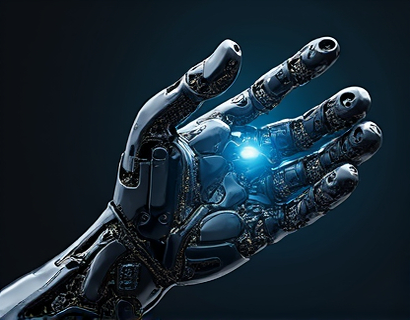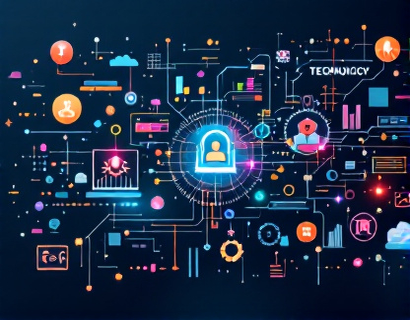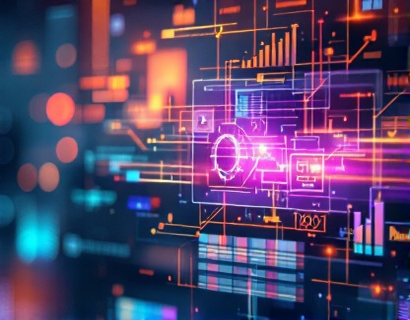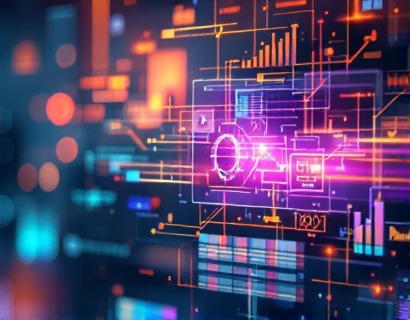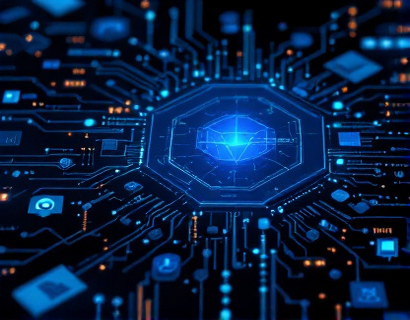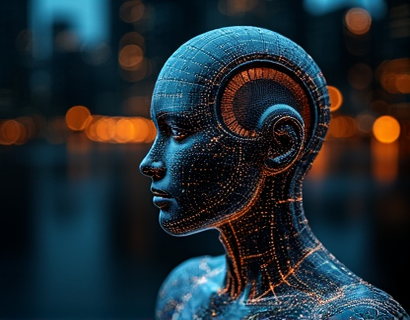Revolutionizing Digital Services: The Synergy of Crypto and AI
The intersection of cryptocurrency and artificial intelligence (AI) is ushering in a new era of digital services, fundamentally transforming how users interact with applications and platforms. This synergy is not just about combining two advanced technologies but about creating a seamless, secure, and highly personalized user experience. As we delve into this topic, we will explore the latest advancements in tech-driven solutions that are redefining the landscape of digital services.
Understanding Cryptocurrency and AI
Cryptocurrency, often associated with blockchain technology, is a digital or virtual currency that uses cryptography for security. It operates on a decentralized network, eliminating the need for intermediaries like banks. This decentralized nature ensures transparency, security, and resilience against fraud and censorship.
Artificial intelligence, on the other hand, involves the simulation of human intelligence processes by machines, particularly computer systems. These processes include learning (the acquisition of information and rules for using it), reasoning (using rules to reach approximate or definite conclusions), and self-correction. AI can operate autonomously or be integrated into existing systems to enhance their functionality.
The combination of these two technologies creates a powerful toolset for developing innovative digital services. Cryptocurrency provides a secure and transparent way to conduct transactions, while AI enhances these transactions with intelligent, adaptive, and personalized experiences.
Enhanced Security and Transparency
One of the most significant benefits of integrating cryptocurrency with AI in digital services is the enhanced security and transparency it offers. Blockchain technology, the backbone of cryptocurrency, ensures that all transactions are recorded in a tamper-proof ledger. This means that user data and transaction histories are secure and immutable, reducing the risk of fraud and data breaches.
AI can further bolster security by detecting and mitigating threats in real-time. Machine learning algorithms can analyze patterns and identify anomalies that may indicate malicious activity. For instance, AI-driven systems can monitor blockchain transactions for suspicious patterns and automatically trigger alerts or enforce security protocols. This proactive approach to security is crucial in a digital landscape where cyber threats are increasingly sophisticated.
Personalized User Experiences
AI's ability to process and analyze vast amounts of data makes it an ideal partner for creating personalized user experiences. In the context of cryptocurrency and digital services, this means tailoring applications and platforms to individual user preferences and behaviors.
For example, a crypto-based financial service can use AI to analyze a user's transaction history, spending habits, and investment preferences to provide personalized recommendations. This could include suggesting optimal times to buy or sell cryptocurrencies, recommending specific coins based on the user's risk tolerance, or even automating investment decisions. Such personalization not only enhances user engagement but also increases the overall utility of the service.
Smart Contracts and Automated Processes
Smart contracts, self-executing contracts with the terms of the agreement directly written into code, are another area where cryptocurrency and AI converge to revolutionize digital services. These contracts can automatically enforce and execute agreements when predefined conditions are met, eliminating the need for intermediaries and reducing transaction costs.
AI can optimize smart contracts by analyzing data to predict outcomes and adjust parameters in real-time. For instance, in a decentralized finance (DeFi) platform, AI can monitor market conditions and automatically adjust the terms of a loan smart contract to minimize risk and maximize returns. This level of automation and intelligence ensures that processes are efficient, reliable, and responsive to changing conditions.
Enhanced User Engagement and Interaction
The integration of AI in cryptocurrency-driven digital services also enhances user engagement and interaction. Chatbots and virtual assistants powered by AI can provide 24/7 customer support, answering queries, and guiding users through complex processes. These AI-driven interfaces can understand natural language, making interactions more intuitive and user-friendly.
Moreover, AI can analyze user behavior and preferences to create engaging content and experiences. For example, a crypto education platform can use AI to curate personalized learning paths based on a user's knowledge level and interests. This not only keeps users engaged but also helps them build a deeper understanding of cryptocurrency and related technologies.
Decentralized Applications (DApps)
Decentralized applications (DApps) are a prime example of how cryptocurrency and AI can transform digital services. DApps operate on a blockchain network and are governed by smart contracts, ensuring transparency and security. AI can enhance DApps by providing intelligent features such as predictive analytics, automated decision-making, and personalized user interfaces.
For instance, a DApp for peer-to-peer lending can use AI to assess creditworthiness, set interest rates, and manage risk in real-time. This not only streamlines the lending process but also makes it more accessible and fair for all parties involved. The decentralized nature of DApps, combined with AI's analytical capabilities, creates a powerful platform for innovative financial services.
Challenges and Considerations
While the potential of combining cryptocurrency and AI is vast, there are several challenges and considerations to keep in mind. One of the primary concerns is the regulatory landscape. As both cryptocurrency and AI are relatively new and rapidly evolving fields, regulations are still catching up. Ensuring compliance with existing laws and navigating the complex regulatory environment is crucial for the successful deployment of these technologies.
Another challenge is the technical complexity involved in integrating blockchain and AI systems. Developing robust, scalable, and secure solutions requires expertise in both domains. Additionally, there is the issue of user adoption and education. Many users are still unfamiliar with cryptocurrency and AI, and educating them about the benefits and functionalities of these technologies is essential for widespread adoption.
Future Prospects
The future of digital services lies in the continued convergence of cryptocurrency and AI. As these technologies mature, we can expect even more innovative applications and services that enhance user experiences. For instance, the integration of AI with the Internet of Things (IoT) and blockchain can lead to smarter, more autonomous systems that seamlessly interact with the physical world.
In the realm of finance, AI-driven crypto trading platforms can become more sophisticated, offering advanced analytics, automated trading, and risk management tools. In healthcare, AI-powered blockchain platforms can ensure secure and privacy-preserving sharing of medical records, leading to better patient care and research outcomes.
The potential is vast, and the synergy between cryptocurrency and AI is just beginning to unfold. As more developers, businesses, and users embrace these technologies, we can anticipate a future where digital services are not only more secure and efficient but also deeply personalized and intuitive.








